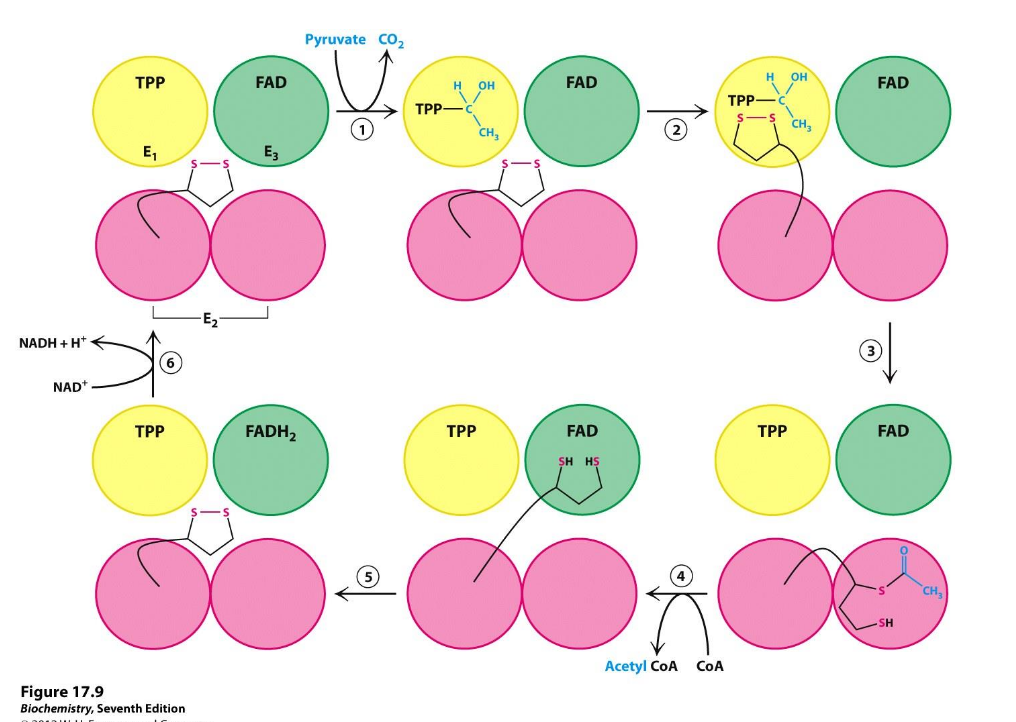Pyruvate dehydrogenase
1/8
There's no tags or description
Looks like no tags are added yet.
Name | Mastery | Learn | Test | Matching | Spaced |
|---|
No study sessions yet.
9 Terms
Outline the link reaction (3 steps)
pyruvate is trasnsported across the inter membrane matrix and decarboxylated by pyruvate dehydrogenase to form acetylcoenzyme A, yeilding NADH
List the 3 different enzymes that make up pyruvate dehydrogenase
pyruvate dehydrogenase component
dihydrolipoly transacetylase
dihydrolipoly dehydrogenase
State the prosthetic group of pyruvate dehydrogenase component
TTP
State the prosthetic group of dihydrolipoly transacetylase
lipoamide
State the prosthetic group of dihydrolipoly dehydrogenase
FAD
What reaction does pyruvate dehydrogenase component catalyse?
oxoxidative decarbolyxation of pyruvate
What reaction does dihydrolipoly transacetylase catalyse?
transfer of acetyl group to co-enzyme A
What reaction does dihydrolipoly dehydrogenase catalyse?
regeneration of the oxidised form of lipoamide

Describe action of acetylcoenzyme
TTP takes electron from pyruvate, both decarboxylating and binding it
complex binds with lilipoic acid, having it move up from transacetylase to the pyruvate dehydrogenase
sulfur from lilipoic acid is used to form a thioester bridge, binding the acetyl group to the lilipoic acid, leaving one sulfur reduced
the transacytlase lilipoic acid domain moves out of pyruvate dehydrogenase
acetyl group is transferred to CoA
lilipoic acid moves to dihydrolipoyl dehydrogenase domain in order to be reoxidised, forming FADH2
FADH2 passes electrons to to NAD = NADH + H
